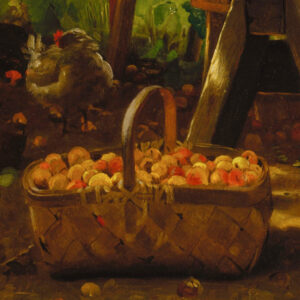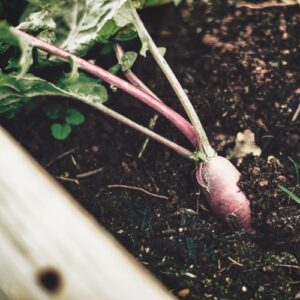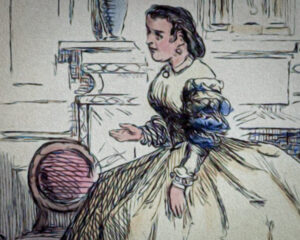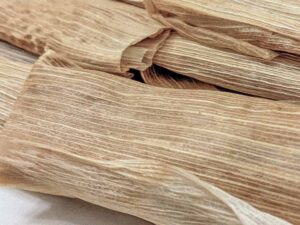Cultured Milk
The Science & Magic of Yogurt Making

Mrs. Gina Loehr
I don’t know how words become what they are, but I do know that whoever decided to call cultures “cultures” was on to something. Participating in the making, the creation of our own food brings us to a deeper level of cultural experience.
This can require some time. It takes about twenty-four hours to make good yogurt, for instance. At first glance, that may look less like a recipe and more like a contract. Deciding to incubate cultured milk is indeed a minor lifestyle change, not just a matter of choosing what to grab from the dairy aisle. I suspect the day-long directions probably scare away most of the quirky folks who ever pause long enough to realize: “Somebody makes my yogurt. I could make my yogurt.”
But it’s surprisingly easy and surpassingly satisfying. One Christmas, my younger brother opened my eyes to this general idea when he showed up at the farm with cheesecloth and other cheese- and yogurt-making supplies in hand. I had married a dairy farmer some years earlier, but in those early days the idea of making our own dairy products instead of just shipping the milk to the cheese factory down the road and then buying it back in the form of mozzarella had never crossed my mind.
My brothers, it seems, inherited the family cooking gene. Those fellas have always loved to spend time in the kitchen throwing spices at meat and concocting sauces to drizzle over grilled vegetables whose names I cannot now recall. Cooking has never been my gift. But pondering the gifts I did have, including the ones just delivered by my brother, I began to realize on that Christmas day that producing dairy products doesn’t require cooking skills. It’s something else entirely. It’s a kind of natural science, a transformation formula that takes one thing and magically makes it into another. It’s less about an intuitive sense of what flavors will blend well or a feeling in your bones regarding the perfect moment to snatch the steak out from under the broiler. It’s more like following a flow chart that consistently produces a miracle. Your own personal, predictable, schedulable, Christmas (or anytime) miracle. It’s amazing. I dove in and have never looked back.
Cheese, of course, is one of life’s preeminent joys, but yogurt is no slouch. And yogurt is one of the easier dairy formulas to follow, even though it involves a bit of commitment. So it’s a good place to start. Just heat some milk to 180 degrees. Stand around with a thermometer and cool it to 120. Add yogurt. (I love that part: add yogurt to make yogurt. Who made the first yogurt?) Incubate somewhere warm for twelve hours, and voilà. Healthy, delicious, yogurt for the price of milk. A price which should be higher than it is, by the way, but we’ll leave that for another conversation.
To make strained, or “Greek” yogurt, strain it through cheesecloth for another six hours or so, and you’ll have creamy, trendy yogurt without all the pollution that comes from commercial Greek-style yogurts. I had to try a few different methods before I found my favorite. There was the classic stovetop method, the unromantic-but-effective crockpot-in-the-microwave method, and finally, the pressure cooker method. The pressure cooker wins out because you can heat and incubate in the same space. A few weeks of practice led me to put this miracle on autopilot. Now, many years later, making yogurt feels not only unintimidating, but not even disruptive. It is a simple, satisfying routine that I have incorporated into our life. It is part of our family culture.
This food we set before our children is not just the result of an exchange of funds; it is the result of my husband’s husbandry, the milk he carries home in a steel bucket, combined with my knowledge and labor, plus a miracle of microbiology. I offer homemade yogurt to my family as a gift, after receiving it as one entrusted to me by a power beyond myself. Food has meaning that transcends survival and sustenance: any make-your-own type project helps to remind us of this fact. It’s not just about cultured milk, it’s about cultured people who recognize that in a very real way, we are what we eat.
For those of you who are toying with the idea, just give it a try. The written word cannot here express the sweet joy of lifting that lid after half a day and seeing a pool of liquid transformed into a beautiful, silky, spoonable substance. Tasting it is even sweeter.
— Gina
Basic Yogurt

Servings: 15-20
What You Need
Equipment:
Pressure cooker with yogurt setting
Food thermometer
Whisk
Cheesecloth
Ingredients:
One gallon of milk
1/4 cup plain yogurt
What You Do
Heat milk on yogurt setting until 180 degrees.
Remove steel liner, set in water bath in kitchen sink with cold water and ice surrounding it, approximately 12-15 minutes, until milk cools to 120 degrees.
Whisk in 1/4 cup of plain yogurt.
Replace liner into pressure cooker, cover, turn off, let incubate for 8-12 hours until liquid solidifies like jello. If you prefer strained, or so-called “Greek” yogurt (there’s an interesting, ridiculous, corporate story behind that term, incidentally), then strain off the whey through cheesecloth until thickened, approximately 6 to 8 hours.
Refrigerate until cool, then enjoy.
Notes:
If you have no pressure cooker, or cannot currently find it in your basement, follow the directions in a pan on the stove, then cover and wrap in towels to incubate in the oven (turned off).
If you strain the yogurt, the whey can be collected and used to add protein to homemade bread and soup recipes.
If for some reason your brother did not give you cheesecloth for Christmas, a jumbo coffee filter will work in a pinch.



















